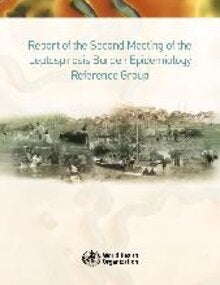Leptospirosis is a zoonotic disease with epidemic potential, especially after a heavy rainfall, caused by a bacterium called Leptospira. Leptospira interrogans is pathogenic to humans and animals, with more than 200 serologic variants or serovars. Humans usually acquire leptospirosis through direct contact with the urine of infected animals or a urine-contaminated environment. Human-to-human transmission occurs only very rarely.
Leptospirosis may present with a wide variety of clinical manifestations, from a mild illness that may progress to a serious and sometimes fatal disease. Its symptoms may mimic many diseases, such as influenza, dengue and other viral haemorrhagic diseases; making the correct diagnosis (clinical and laboratory) at the onset of symptoms is important to prevent severe cases and save lives, primarily in outbreak situations.
Clinical diagnosis
Typically, the disease presents in four broad clinical categories:
- A mild, influenza-like illness
- Weil's syndrome characterized by jaundice, renal failure, haemorrhage and myocarditis with arrhythmias
- Meningitis/meningoencephalitis
- Pulmonary haemorrhage with respiratory failure
Of the many symptoms the most common clinical features of leptospirosis include fever, headache, myalgia (particularly in the calf muscle), conjunctival suffusion, jaundice, general malaise in addition to other symptoms/signs.
Incubation period: 5-14 days, with a range of 2-30 days.
Symptoms are easily confused with other common diseases in the tropics, such as dengue and other hemorrhagic fevers.
The diagnosis of leptospirosis should be considered in any patient presenting with an abrupt onset of fever, chills, conjunctival suffusion, headache, myalgia and jaundice.
History of occupational or recreational exposure to infected animals or to an environment potentially contaminated with animal urine.
Differential diagnosis
The following diseases should be considered in the differential diagnosis of leptospirosis: influenza, dengue and dengue hemorrhagic fever, hanta virus infection, yellow fever and other viral hemorrhagic fevers, rickettsiosis, borreliosis, brucellosis, malaria, pyelonephritis, aseptic meningitis, chemical poisoning, food poisoning, typhoid fever and other enteric fevers, viral hepatitis, pyrexia of unknown origin, primary HIV seroconversion, legionnaire’s disease, toxoplasmosis, infectious mononucleosis, pharyngitis.
Laboratory testing for confirmation
Diagnosis is usually based on serology in conjunction with the clinical presentation and epidemiological data (a history of possible exposure, presence of risk factors). The microscopic agglutination test (MAT) and the enzyme linked immunosorbent assay (ELISA) are two serologic tests used for laboratory diagnosis of leptospirosis. In order to obtain a positive diagnosis using the gold standard MAT, a minimum of two serum samples taken at intervals of about 10 days apart, must be compared to observe a four-fold or greater rise in antibody titer. Isolation of leptospires from blood, urine or other clinical materials can be achieved through culture, and detection by polymerase chain reaction (PCR) and immuno staining techniques may be available in some centers. Isolation of leptospires is the only direct and definitive proof of infection. For postmortem diagnosis, in addition to serology and culture, leptospires can be detected in tissues using PCR or immunohistochemical staining, especially by direct immunofluorescence.




